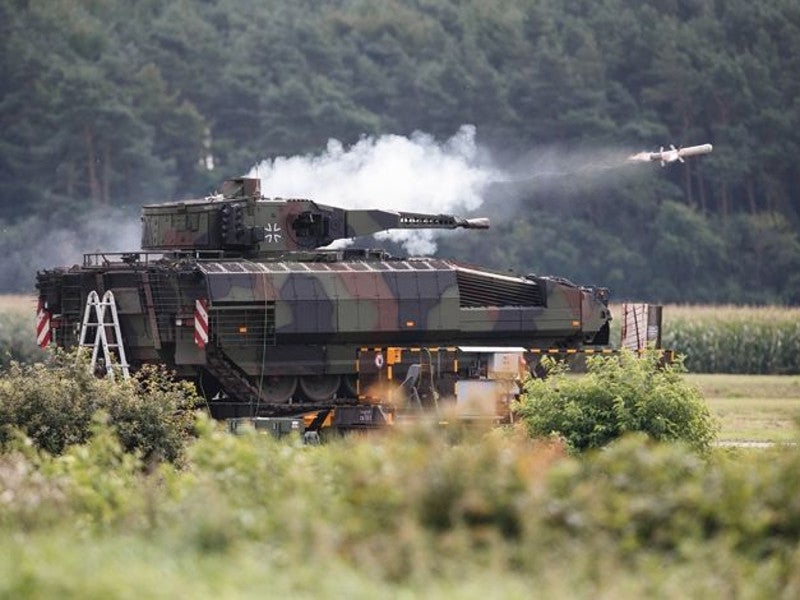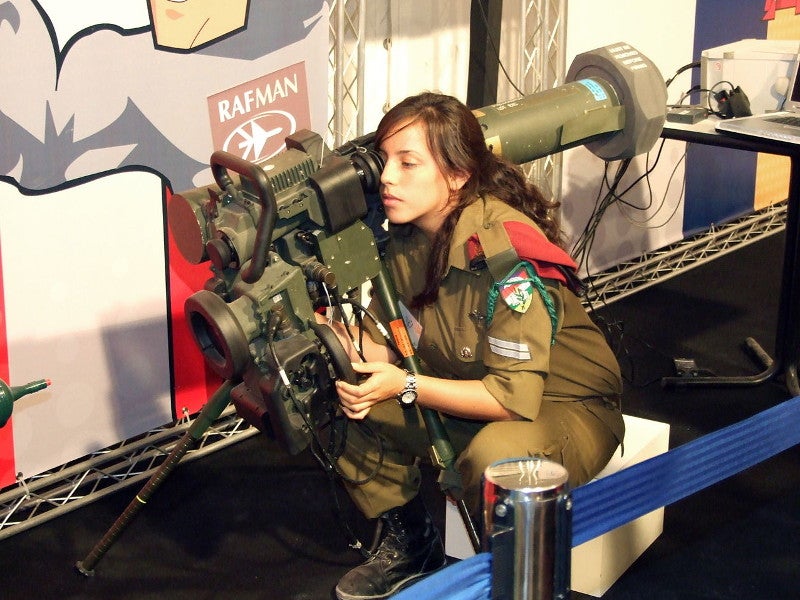Spike LR2 is the latest variant in the family of Spike anti-tank guided weapons developed by Rafael Advanced Defense Systems. The fifth-generation missile is compatible with a range of launch platforms.
Rafael, along with Diehl Defence and Rheinmetall Defence Electronics, formed a joint venture called EuroSpike to market the Spike family of missiles in Europe.
The Slovak Ministry of Defence, through the Nato Support & Procurement Agency (NSPA), placed an order with Eurospike for Spike LR2 missiles and advanced launcher units, in March 2020.
The Australian Defence Forces selected the Spike LR2 missile system for the Boxer combat reconnaissance vehicle (CRV), in August 2018. Varley Rafael Australia (VRA Systems), a joint venture of Rafael and the Varley Group is responsible to deliver the missiles.
More than 33,000 Spike missiles are currently operational in 33 countries worldwide.
Spike LR2 missile design and features
Spike LR2 is a fire and forget missile delivering unparalleled performance and high lethality for users. It is designed to be deployed by infantry, armoured vehicles, attack helicopters, and naval vessels.
The missile features four fins at the rear and four wings at the centre of the body. The tail fins ensure guidance during the flight, while the wings ensure stabilisation and lift.
The weapon system is made up of the missile and the launching tripod with a fire control unit. The man-portable missile has a length of 1.2m and diameter of 130mm. It weighs approximately 13kg, while the ground launcher weighs 12kg.
Spike LR2 can engage targets at a range of 5.5km when fired from the ground launcher, while the missile launched from the helicopter can attain a maximum range of 10km.
Commonalities between the missiles of the Spike family reduce the production, acquisition, maintenance and training costs for the operators.
The SPIKE weapon system also comes with different types of training systems, such as the indoor trainer (IDT) and outdoor trainer (ODT).
Guidance and control
The missile is equipped with an advanced electro-optical seeker integrating an uncooled infrared sensor and a high-definition colour day sensor. It uses a fibre optic or radio frequency (RF) data link.
Powered by AI, the seeker features smart target tracing capabilities ensuring target lock-on under extreme conditions against multiple targets. It eliminates the intervention of gunner while engaging the targets.
The lofted missile trajectory further enables a steep angle of attack to engage the line of sight (LOS) and beyond line of sight (BLOS) targets. The missile system also integrates an embedded inertial measurement unit (IMU) assembly to support third party target allocation.
The counter-active protection system (CAPS) capability ensures the engagement of targets at higher impact angles of up to 70°.
The missile also features the capability to abort the mission mid-flight. Upon the launch of the missile, the operator can immediately load another missile into the launcher for the next engagement.
Spike LR2 warhead
Spike LR 2 anti-tank missile can carry two types of warheads including tandem and multipurpose blast warheads. The tandem high-explosive anti-tank (HEAT) warhead improves the armour penetration capability of the missile by 30%.
The blast warhead is equipped with a time-delay fuse to detonate within the structure to increase lethality and impose more damage to reinforced targets, vehicles and marine vessels.
Launch platforms of Spike LR2 missile
The missile can be fired from any Spike launcher by infantry or from mounts aboard vehicles such as light tactical vehicles, armoured personnel carriers (APCs) and utility vehicles.
The ground-based launch unit of the missile includes a command and launch unit (CLU), an integrated control launch unit (ICLU), and the vehicle missile launch system (VMLS).
Spike LR 2 can be fired from helicopters and fixed-wing aircraft as well as naval weapon stations.






